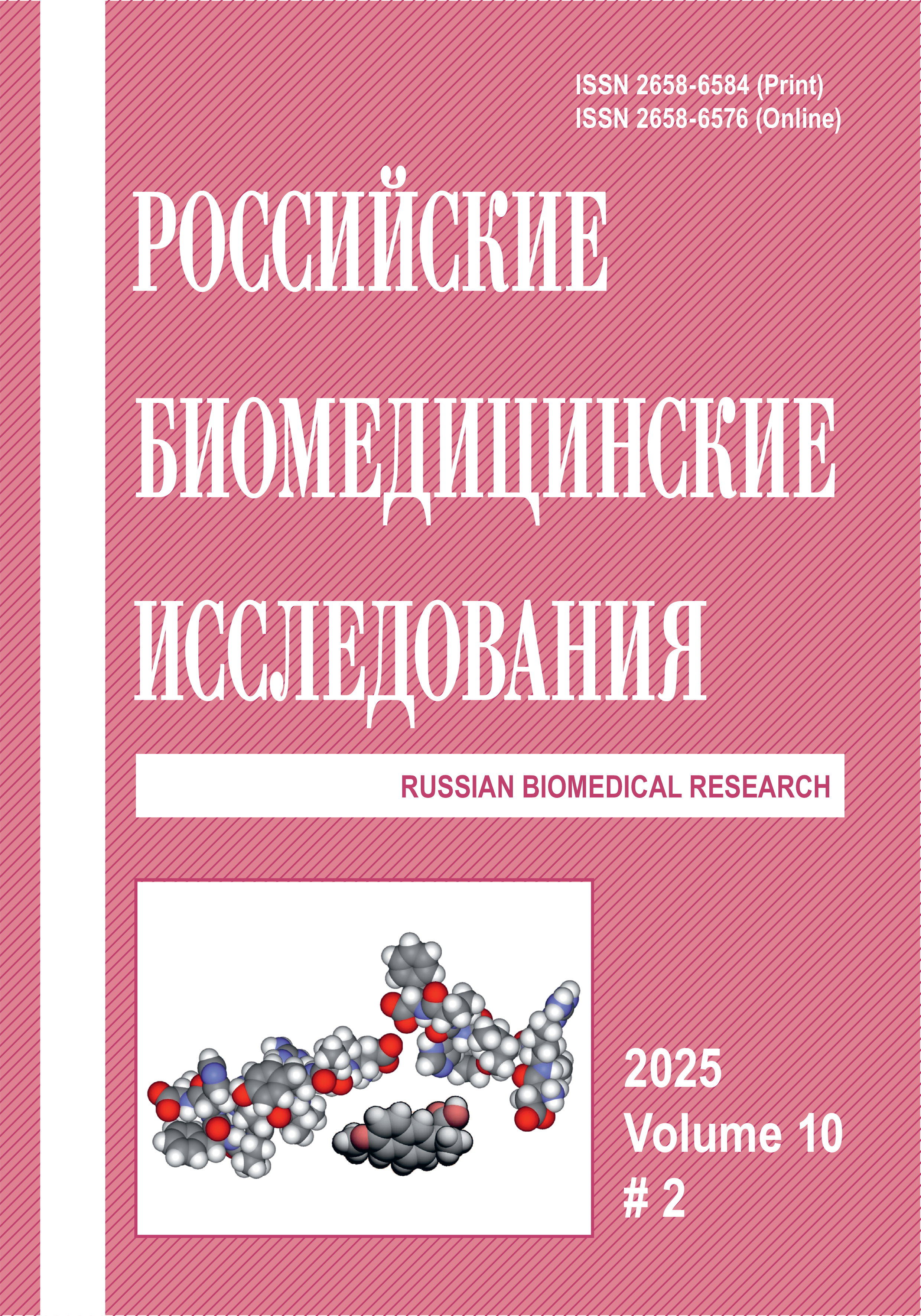OPTIMIZING EFFECTS OF MEGLUMINE SODIUM SUCCINATE “REAMBERIN” REGARDING POSTOPERATIVE ANESTHESIA IN BURNED PATIENTS AFTER SURGICAL NECRECTOMY
Abstract
Introduction. Succinates (succinic acid and its salts) in the body are closely related to the “production” of energy, which is necessary for vital activity, since they are products of the fifth and substrate of the sixth reaction in the Krebs cycle. A possible way to improve tissue oxygenation without aggressive oxygen insufflation may be to improve the oxidative phosphorylation process. This pathway can be achieved through the use of succinates. The purpose of the study. To conduct a comparative study of the effect of meglumine sodium succinate and the level of tissue oxygenation in burned patients on the quality of postoperative anesthesia. Materials and methods. In this study, 106 patients aged 20 to 90 years after surgical necrectomy were examined and divided into two groups. The study was conducted in the Department of Thermal Injuries of the St. Petersburg Scientific Research Institute of Emergency Medicine named after I.I. Dzhanelidze. The amount of analgesics required for effective postoperative anesthesia (3 days) was determined in two groups of patients: those who received oxygen-air mixture insufflation as part of intensive care in the postoperative period (56 people) and additionally received reamberin infusion against the background of oxygen-air mixture insufflation (50 people). The number of postoperative complications was calculated according to the Clavien–Dindo classification of surgical complications. The parameters of oxygen metabolism were determined: saturation of hemoglobin with oxygen in arterial and venous blood, oxygen utilization coefficient by tissues. Results. Our proposed method of administration of the drug meglumine sodium succinate “Reamberin” intravenously drip burned in the postoperative period allowed to reduce the frequency of surgical postoperative complications by 31% according to Clavien–Dindo (p <0.05), and also increases the utilization of oxygen by tissues in the area of the postoperative wound. The total number of opioid analgesics needed for complete relief of pain syndrome was 4 times less. Conclusion. Intravenous administration of meglumine sodium succinate “Reamberin” to those burned in the postoperative period made it possible to increase oxygen utilization by tissues in the area of the postoperative wound and reduce the frequency of surgical complications and the number of opioid analgesics.
References
Зиновьев Е.В., Солошенко В.В., Гогохия Т.З. и др. Возможности объективизации иссечения при ранней тангенциальной некрэктомии у тяжелообожженных. Medline.ru. Российский биомедицинский журнал. 2022;23(2):801–811.
Гогохия Т.З., Зиновьев Е.В., Солошенко В.В. и др. Особенности выполнения тангенциальной некрэктомии под контролем лазерной доплеровской флоуметрии в ранние сроки до формирования зоны демаркации. Материалы V съезда ассоциации врачей экстренной медицинской помощи Узбекистана. Ташкент: НМИУ; 2021:148–149.
Зиновьев Е.В., Солошенко В.В., Гогохия Т.З. и др. Особенности выполнения тангенциальной некрэктомии в ранние сроки до формирования зоны демаркации. Комбустиология: электрон. науч.-практ. журн. 2021:65–66.
Орлов Ю.П. Митохондриальная дисфункция при критических состояниях. Решат ли проблему сукцинаты? СПб.; 2019.
Орлов Ю.П. Сукцинаты при критических состояниях и ответы на вопросы: почему? зачем? кому? когда? сколько? СПб.; 2020.
Афончиков В.С., Орлова О.В., Грицай А.Н. Использование раствора реамберина в военных условиях. Хирургия. 2023;2:86–90. DOI: 10.17116/hirurgia2023022186.
Кукушкин М.Л., Супонева Н.А., Давыдов О.С. и др. Резолюция экспертного совета. Возможности препарата Цитофлавина у пациентов с диабетической полинейропатией. Российский журнал боли. 2023;21(3):1–15.
Narinder R. Current issues in postoperative pain management. Eur J Anesth. 2016;33(3):160–171. DOI: 10.1097/EJa.0000000000000366.
Ozan A. Pain and tissue oxygenation. Crit Care Med. 2015;43(4):462–463.
Heiseth L., Hisdal J., Hoff I.E. et al. Tissue oxygen saturation and finger perfusion index in central hypovolemia: influence of pain. Crit Care Med. 2015;43(4):747–756.
Masaki Nakane. Biological effects of the oxygen molecule in critically ill patients. J Intensive Care. 2020;95:49–69.
Abdelmalak B.D., Cata J.P., Boniela A. et al. Intraoperative tissue oxiganation and postoperative outcomes after major non-cardiac surgery: an observation study. Clin Practic. 2013;110(2):241–249.
Dindo D., Demartines N., Clavien P.A. Classification of surgical complication. Ann Surg. 2004;240(2):205–213. DOI: 10.1097/01.sla.0000133083.54934.ae.
Kaczmarski P., Karuga F.F., Szmyd B. et al. The role of inflammation, hypoxia, and opioid receptor expression in pain modulation in patients suffering from obstructive sleep apnea. Int J Mol Sci. 2022;23(16):90–98. DOI: 10.3390/ijms23169080.
Vincent J.L., Voore F.A., Bellomo R., Marini J.J. Texbook of Critical Care. 8th edition. Elsevier. 2023.
Copyright (c) 2025 Russian Biomedical Research

This work is licensed under a Creative Commons Attribution 4.0 International License.



